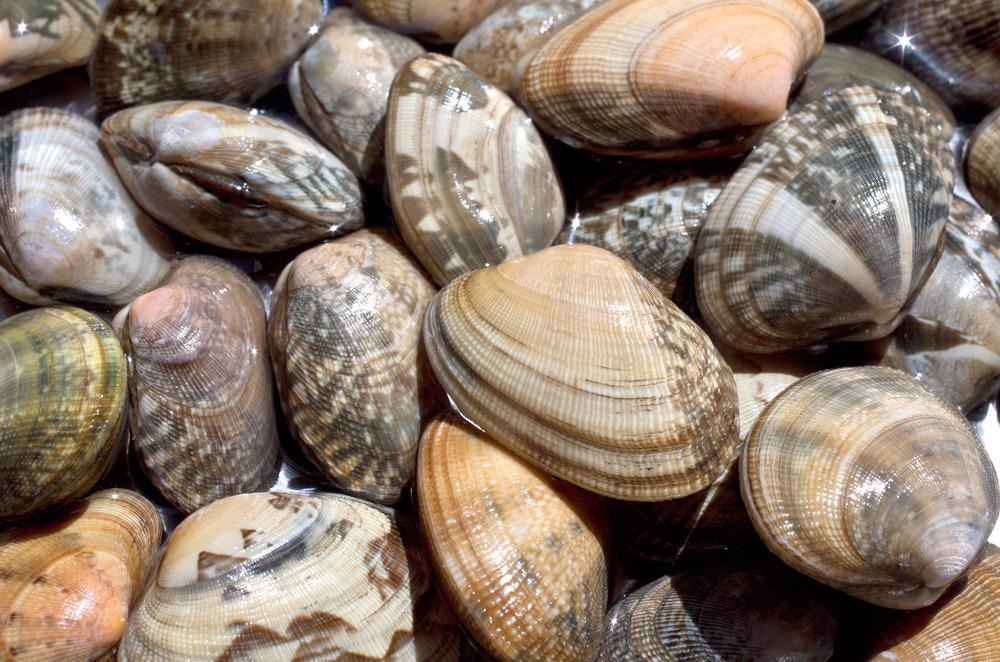Marine organisms are continually exposed to various nanoparticles due to their high deposition into coastal marine environments. A new study has focussed on analyzing the independent and combinational effect of different nanoparticles, i.e., titanium oxide (TiO2), zinc oxide (ZnO) and C60 fullerene (FC60) on Manila clam Ruditapes philippinarum. This study is available as pre-proof in Science of the Total Environment.

Study: Zinc oxide, titanium dioxide and C60 fullerene nanoparticles, alone and in mixture, differently affect biomarker responses and proteome in the clam Ruditapes philippinarum. Image Credit: starry sky/Shutterstock.com
Marine Organisms and Nanoparticles
Increased production of nanomaterial-based products in various fields of science and technology has led to the continual release of a significant amount of nanoparticles (NPs) in the environment, including the aquatic ecosystem. Subsequently, marine organisms are continually exposed to them and are significantly affected.
Several ecotoxicological studies have examined the consequences and the mechanism(s) of action (MoA) of various contaminants to marine species. Previous laboratory toxicity studies have indicated that both marine and freshwater species are adversely affected by the presence of NPs.
Scientists revealed that even though NPs are present in relatively low concentrations in the aquatic environment, the combinational effect of several NPs could be different compared to the effect of a single NP on marine species.
Researchers have stated that examination of the combinational effect of multiple chemicals on organisms is far more challenging compared to the effect of a single toxic chemical. This is why not much evidence is documented about the combinational effect of NPs on marine species.
Assessment of Metal Oxide NPs (nZnO and nTiO2) and Carbon NP (FC60) on Marine Species - A New Study
In a new study, scientists used two metal oxide NPs (nZnO and nTiO2) and a carbon NP (FC60) to determine the single and combinational effect of these nanoparticles on marine species. They selected these NPs because they are the most popularly used NPs globally.
Although several studies have reported the MoA of single nTiO2, nZnO, and FC60 on marine species, they failed to determine its combinational effect. Previous studies have shown that bivalve molluscs are the most affected species by NP toxicity. Among bivalve molluscs, clams are most severely affected, leading to the marine clam R philippinarum being the focus of the research.
In this study, researchers have focussed on assessing the oxidative stress and damages caused by NPs in clam tissues. They devised a multi-biomarker approach in combination with a redox proteomics strategy to determine redox-based changes within the proteome. This method helped them obtain better insights into NP’s mixture toxicity on marine species.
Scientists collected R. philippinarum species and acclimatized them in laboratory conditions for five days before exposing them to NPs for seven days. Subsequently, clam haemolymph was evaluated for DNA damage, protein damage, and the production of intracellular superoxide anion. The protein damages were evaluated using 1-DE redox proteomics. Researchers estimated glutathione S-transferase (GST), catalase (CAT), and superoxide dismutase (SOD) activities and lipid peroxidation in clam’s gill and digestive gland.
Key Findings
Scientists reported that oxidative stress was the key underlying mechanism associated with NP toxicity; however, MoA varied from one tissue to another. In this study, two parameters represented the level of DNA damage, i.e., the percentage of tail DNA and the ratio of migration length to comet head diameter (LDR). The authors observed that both the parameters indicated a high level of DNA damage on the seventh day of exposure to NPs, single or in a mixture.
Based on oxidative stress analysis in the hemocytes, researchers found that the level of DNA damage caused by TiO2 alone was comparable to the effect of the NPs mixture. Although the other two NPs exhibited adverse effects, their level did not surpass the combined effect of NP mixtures.
Researchers observed that in the gills, the GST activity reduced after seven days, which implied inhibition of the detoxification process in the presence of FC60 and the mixture. Additionally, SOD activity was found to be higher in the presence of the NP mixture. However, scientists observed that CAT activity varied based on exposure time.
An increase in lipid peroxidation and DNA damage was observed in the digestive gland on the 7th day of NP exposure in single and in the NPs mixture. Both the digestive gland and gills revealed bioaccumulation of all the NPs.
Both types of protein damage, i.e., redox-thiol and carbonylated protein, occurred in both the digestive gland and the hemolymph, in the presence of NPs. Scientists revealed that an increase in the ROS level could be the underlying mechanism behind protein damage. NP mixture exposure affects major protein groups that are associated with metabolism and cytoskeleton proteins.
Conclusion
The authors reported that clams were mostly affected by exposure to NPs mixture compared to a single NP. This conclusion has been based on multi-biomarker and redox proteomic approaches.
Reference
Marisa, I. et al. (2022) Zinc oxide, titanium dioxide and C60 fullerene nanoparticles, alone and in mixture, differently affect biomarker responses and proteome in the clam Ruditapes philippinarum. Science of the Total Environment. https://doi.org/10.1016/j.scitotenv.2022.155873
Disclaimer: The views expressed here are those of the author expressed in their private capacity and do not necessarily represent the views of AZoM.com Limited T/A AZoNetwork the owner and operator of this website. This disclaimer forms part of the Terms and conditions of use of this website.